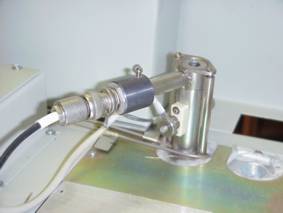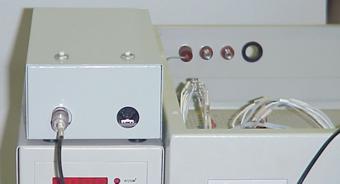ADC LabNET offers direct detector connecting with
extremely wide
dynamic range up to 107

Wide range of chromatographs have its own built-in electrometers
but does not have its own ADC for digitising chromatographic signal.
Most of the electrometers have analogue output in range (0-1mv,
0-1V,0-10V), and ADC converter is connected to this output.
Typically scheme of measurement on these instrument is built
of electrometer plus connected at its output ADC. This way introduces
several paths for noise intervention in measuring data.
|
- Noise intervention between detector and electrometer. It is
typically depends on cable length, leads quality, cable quality.
- Noise impact at output of electrometer amplifier. It is typically
depends on electrometer design and output voltage levels.
Figure 1. Typical scheme of measurement from FID detector.
| FID |
low
current cable up to 1 m |
Electrometer |
Low
voltage cable 2-3m |
ADC |
Digital
data to PC |
PC |
 |
 |
 |
| |
|
|
|
|
 Since
we have deals with lots of chromatographs,
we decided make our own approach in low current measurement from
FID, NPD, ECD detectors. Since
we have deals with lots of chromatographs,
we decided make our own approach in low current measurement from
FID, NPD, ECD detectors.
ADC LabNET box shown at the left is
a composition of electrometer and ADC. All in one. LabNET design
allows place it in nearest possible to detector location, even
at the top of chromatograph.
|
| |
|
Figure 2. Signal path scheme in ADC LabNET directly connected
to FID
| FID |
low
current cable 10 cm -1 m
(3 in - 3 ft) |
ADC
LabNET module |
Digital
data to PC |
PC |
 |
Electrometer |
ADC |
CPU |
 |
| |
|
|
| Besides of mentioned benefits and decreasing noise impact in data
collecting path, we have built into ADC+Electrometer another feature:
Automatic Gain Switching. This feature provided by built-in microcontroller
allow signal registration in very high dynamic range e.g. it is
possible to see on chromatogram main compound (solvent) - 99,99%
of mixture and all impurities to the level of 0,00001%.
Since AGS is working transparently for operator, there is no need
in manual attenuation, signal zeroing etc. This approach gives new
grade of metrological characteristics to instruments like Shimadzu-GC-17A,
Tsvet-100, Tsvet-500 etc. |
|

 Since
we have deals with
Since
we have deals with